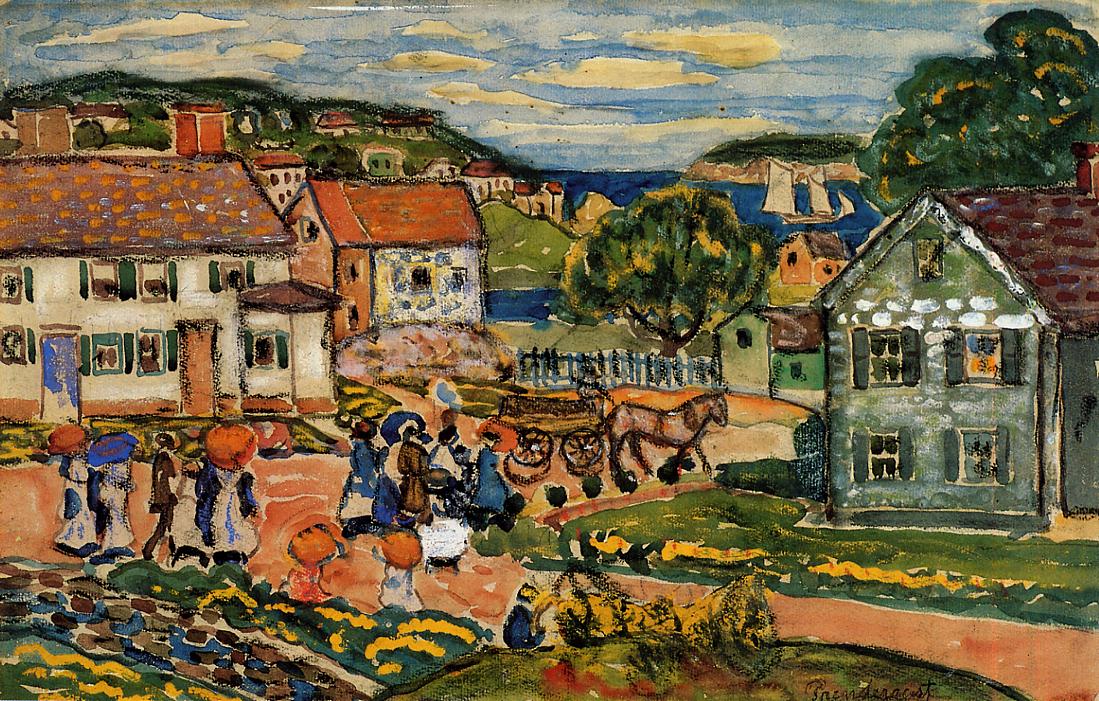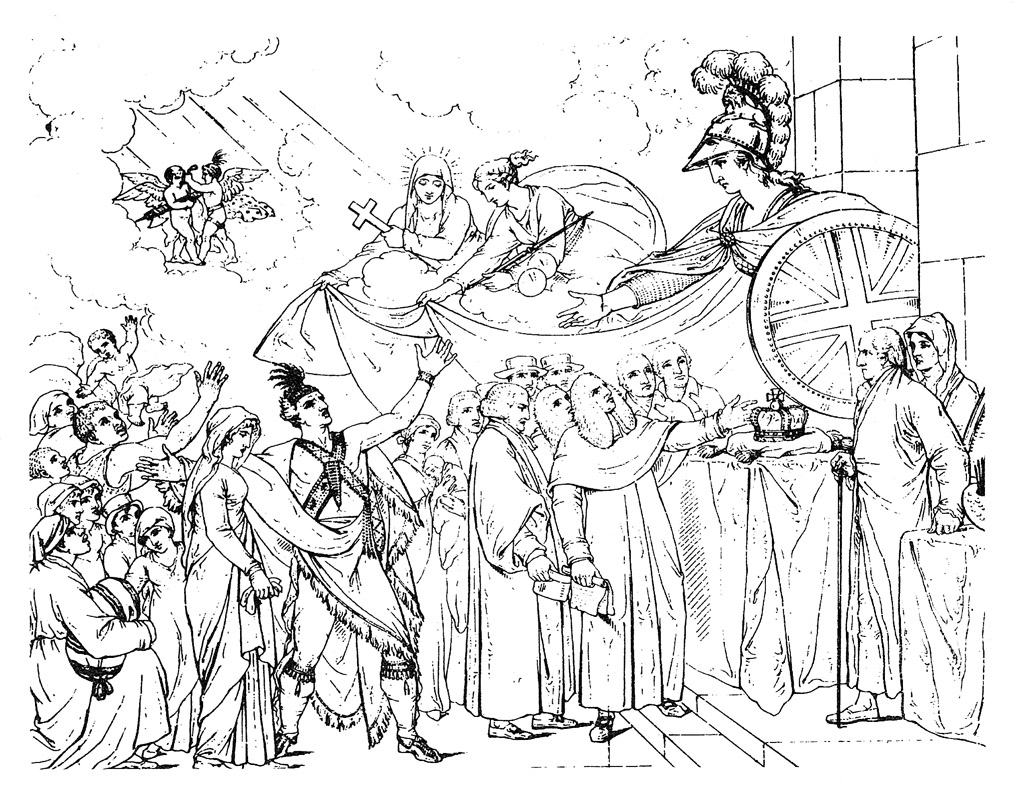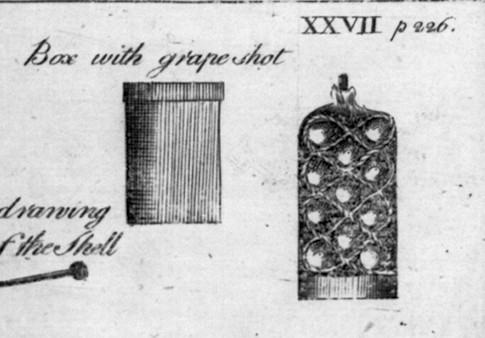|
HMS Canceaux (1764)
HMS ''Canceaux'' was a sloop active in both the hydrographic exploration of the Atlantic Canada and New England coastline and in the American Revolutionary War. She played an integral role in the battle for control of Maine, in particular at the Burning of Falmouth.Conforti, Joseph ''Creating Portland: History and Place in Northern New England'' (2007) pp. 31&55–58 She began her life as a merchant vessel and would eventually be transformed to a military vessel for the Royal Navy, equipped to command the razing of major settlements. After leaving the Saint Lawrence River estuary in 1771, ''Canceaux'' actively shaped the maritime history of the American Revolution. Incident at Fort William and Mary In December 1774 HMS ''Canceaux'', under the command of Lt. Henry Mowat, attempted to restore order to Fort William and Mary following the seizure of supplies by colonial forces led by Paul Revere. The fort, located on New Castle Island near Portsmouth, New Hampshire, was seen a ... [...More Info...] [...Related Items...] OR: [Wikipedia] [Google] [Baidu] |
Kingdom Of Great Britain
Great Britain, also known as the Kingdom of Great Britain, was a sovereign state in Western Europe from 1707 to the end of 1800. The state was created by the 1706 Treaty of Union and ratified by the Acts of Union 1707, which united the Kingdom of England (including Wales) and the Kingdom of Scotland to form a single kingdom encompassing the whole island of Great Britain and its outlying islands, with the exception of the Isle of Man and the Channel Islands. The unitary state was governed by a single Parliament of Great Britain, parliament at the Palace of Westminster, but distinct legal systems—English law and Scots law—remained in use, as did distinct educational systems and religious institutions, namely the Church of England and the Church of Scotland remaining as the national churches of England and Scotland respectively. The formerly separate kingdoms had been in personal union since the Union of the Crowns in 1603 when James VI of Scotland became King of England an ... [...More Info...] [...Related Items...] OR: [Wikipedia] [Google] [Baidu] |
Smuggling
Smuggling is the illegal transportation of objects, substances, information or people, such as out of a house or buildings, into a prison, or across an international border, in violation of applicable laws or other regulations. More broadly, social scientists define smuggling as the purposeful movement across a border in contravention to the relevant legal frameworks. There are various motivations to smuggle. These include the participation in illegal trade, such as in the drug trade, illegal weapons trade, prostitution, human trafficking, kidnapping, heists, chop shops, illegal immigration or illegal emigration, tax evasion, import restrictions, export restrictions, providing contraband to prison inmates, or the theft of the items being smuggled. Smuggling is a common theme in literature, from Bizet's opera ''Carmen'' to the James Bond spy books (and later films) '' Diamonds Are Forever'' and '' Goldfinger''. Etymology The verb ''smuggle'', from Low German ''smuggeln'' o ... [...More Info...] [...Related Items...] OR: [Wikipedia] [Google] [Baidu] |
Marblehead, Massachusetts
Marblehead is a coastal New England town in Essex County, Massachusetts, United States, along the North Shore (Massachusetts), North Shore. Its population was 20,441 at the 2020 United States Census, 2020 census. The town lies on a small peninsula that extends into the northern part of Massachusetts Bay. Attached to the town is a near island, known as Marblehead Neck, connected to the mainland by a narrow isthmus. Marblehead Harbor, protected by shallow shoals and rocks from the open sea, lies between the mainland and the Neck. Beside the Marblehead town center, two other villages lie within the town: the Old Town, which was the original town center, and Clifton, which lies along the border with the neighboring town of Swampscott, Massachusetts, Swampscott. A town with roots in commercial fishing and yachting, Marblehead was a major shipyard and is often referred to as the birthplace of the United States Navy, American Navy, a title sometimes disputed with nearby Beverly, Mass ... [...More Info...] [...Related Items...] OR: [Wikipedia] [Google] [Baidu] |
Samuel Graves
Admiral (Royal Navy), Admiral Samuel Graves (17 April 1713 – 8 March 1787) was a Royal Navy officer who served in the Seven Years' War and American Revolutionary War, American War of Independence. Ancestry He is thought to have been born in Castledawson, Ireland. His grandfather, Captain James Graves (1654–1689), was murdered in his bed and robbed of his regiment's wages. Samuel Graves was born the youngest son and presumably the second youngest child of Captain Graves' son Samuel Graves (1674–1727) and his wife Jane Moore. He had three older brothers and a sister. By joining the Royal Navy, he followed in the footsteps of his uncle Thomas Graves, whose son Thomas Graves, 1st Baron Graves, Thomas Graves is most well known for having commanded the British fleet at the Battle of the Chesapeake during the American War of Independence. Another Thomas Graves (Royal Navy officer), Thomas Graves, a nephew of Samuel Graves, was knighted following the Battle of Copenhagen (1801) ... [...More Info...] [...Related Items...] OR: [Wikipedia] [Google] [Baidu] |
Thompson's War
Thompson's War was an early American Revolutionary War confrontation between Samuel Thompson's patriot militia and loyalists supported by HMS ''Canceaux''. The confrontation ended without fatalities, but provoked the retaliatory Burning of Falmouth five months later. Falmouth is now known as Portland, Maine, but Maine was part of Massachusetts at the time. Background Brunswick, Maine, tavern owner Samuel Thompson had been elected to the Brunswick Board of selectmen in 1768, 1770, and 1771. He was elected commander of the Brunswick militia in 1774 and headed the local enforcement committee for the Continental Association created by the First Continental Congress to boycott all goods from Great Britain. The Continental Association attempted to enforce the boycott on 2 March 1775 against a shipload of sail, rope, and rigging for loyalist shipbuilder Captain Samuel Coulson of Portland by demanding the delivery ship leave port. Coulson requested delay while the English sloop compl ... [...More Info...] [...Related Items...] OR: [Wikipedia] [Google] [Baidu] |
Fort William And Mary
Fort William and Mary was a colonial-era fortification in Great Britain's worldwide system of defenses, defended by soldiers of the Province of New Hampshire who reported directly to the royal governor. The fort, originally known as "The Castle," was situated on the island of New Castle, New Hampshire, at the mouth of the Piscataqua River estuary. It was renamed Fort William and Mary circa 1692, after the accession of the monarchs William III and Mary II to the British throne.Roberts, pp. 498–499 It was captured by Patriot forces, recaptured, and later abandoned by the British in the American Revolutionary War (1775–1783). The fort was renamed Fort Constitution in 1808 following rebuilding, in light of increasing hostilities with the British again, especially from its Royal Navy, resulting in the subsequent War of 1812. The fort was further rebuilt and expanded through 1899, following the Spanish-American War. It served actively through the first half of the 20th century t ... [...More Info...] [...Related Items...] OR: [Wikipedia] [Google] [Baidu] |
Minutemen
Minutemen were members of the organized New England colonial militia companies trained in weaponry, tactics, and military strategies during the American Revolutionary War. They were known for being ready at a minute's notice, hence the name. Minutemen provided a highly mobile, rapidly deployed force that enabled the colonies to respond immediately to military threats. They were an evolution from the prior colonial rapid-response units. The minutemen were among the first to fight in the American Revolution. Their teams constituted about a quarter of the entire militia. They were generally younger, more mobile, and provided with weapons and arms by the local governments. They were still part of the overall militia regimental organizations in the New England Colonies. The term has also been applied to various later United States civilian paramilitary forces. History In the Massachusetts Bay Colony, all able-bodied men between the ages of 16 and 60 were required to participate ... [...More Info...] [...Related Items...] OR: [Wikipedia] [Google] [Baidu] |
Loyalist (American Revolution)
Loyalists were refugee colonists from Thirteen Colonies, thirteen of the 20 British American colonies who remained loyal to the British Crown, British crown during the American Revolution, often referred to as Tories, Royalists, or King's Men at the time. They were opposed by the Patriot (American Revolution), Patriots or Whigs, who supported the revolution and considered them "persons inimical to the liberties of America." Prominent Loyalists repeatedly assured the Government of the United Kingdom, British government that many thousands of them would spring to arms and fight for the Crown. The British government acted in expectation of that, especially during the Southern theater of the American Revolutionary War, Southern campaigns of 1780 and 1781. Britain was able to effectively protect the people only in areas where they had military control, thus the number of military Loyalists was significantly lower than what had been expected. Loyalists were often under suspicion of t ... [...More Info...] [...Related Items...] OR: [Wikipedia] [Google] [Baidu] |
Henry Mowat
Henry Mowat (1734–1798) was an officer of the Royal Navy commanding ships in northern New England during the American Revolutionary War. He was the son of Captain Patrick Mowat of the post ship HMS ''Dolphin''. He was born in Scotland and went to sea at the age of 18. Career After six years as an able seaman and midshipman Mowat was commissioned a lieutenant aboard HMS ''Baltimore'' in 1758. In 1764, Lieutenant Mowat was given command of the recently purchased 16-gunGoold's gun count includes swivel guns, but not the mortars of the bomb sloop ''Spitfire''. Half (or fewer) of this count were carriage-mounted cannon. Other references indicate ''Canceaux'' carried 8 cannon, and ''Halifax'' carried 6. sloop HMS ''Canceaux''. ''Canceaux'', with Mowat in command, conducted a hydrographic survey of the coast of North America from the estuary of the Saint Lawrence River to Boston. While so engaged, Mowat was ordered to Portsmouth, New Hampshire in December, 1774, to protect mi ... [...More Info...] [...Related Items...] OR: [Wikipedia] [Google] [Baidu] |
Grapeshot
In artillery, a grapeshot is a type of ammunition that consists of a collection of smaller-caliber round shots packed tightly in a canvas bag and separated from the gunpowder charge by a metal wadding, rather than being a single solid projectile. When assembled, the shot resembled a cluster of grapes, hence the name. Grapeshot was used both on land and at sea. On firing, the canvas wrapping disintegrates and the contained balls scatter out from the muzzle, giving a ballistic effect similar to a giant shotgun. Grapeshot was devastatingly effective against massed infantry at short range and was also used at medium range. Solid shot was used at longer range and canister at shorter. When used in naval warfare, grapeshot served a dual purpose. First, it continued its role as an anti-personnel projectile. However, the effect was diminished due to a large portion of the crew being below decks and the addition of hammock netting in iron brackets intended to slow or stop smaller shot. ... [...More Info...] [...Related Items...] OR: [Wikipedia] [Google] [Baidu] |
Brunswick, Maine
Brunswick is a New England town, town in Cumberland County, Maine, United States. Brunswick is included in the Lewiston-Auburn, Maine metropolitan New England city and town area. The population was 21,756 at the 2020 United States Census. Part of the Portland-South Portland-Biddeford metropolitan area, Brunswick is home to Bowdoin College, the Bowdoin International Music Festival, the Bowdoin College Museum of Art, the Peary–MacMillan Arctic Museum, and the Maine State Music Theatre. It was formerly home to the U.S. Naval Air Station Brunswick, which was permanently closed on May 31, 2011, and has since been partially released to redevelopment as "Brunswick Landing". History Settled in 1628 by Thomas Purchase and other fishermen, the area was called by its Indigenous peoples of the Americas, Indian name, Pejepscot, Maine, Pejepscot, meaning "the long, rocky rapids part [of the river]". In 1639, Purchase placed his settlement under protection of the Massachusetts Bay Colony. ... [...More Info...] [...Related Items...] OR: [Wikipedia] [Google] [Baidu] |






